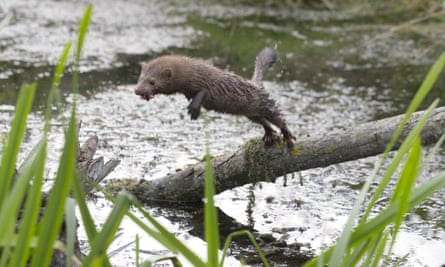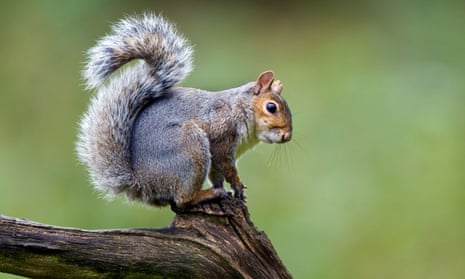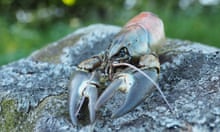Anyone caught exporting or possessing invasive species such as grey squirrels, ruddy ducks and water hyacinth in the EU will soon face heavy fines and confiscations, under a new blacklist filed at the WTO, which the Guardian has seen.
Raccoons, Javan mongooses, and South American coypus are among the 37 types of flora and fauna that will soon face eradication or strict controls in a bid to halt threats to native wildlife and economic losses, estimated at €12bn (£8.8bn) per year by the EU.
Initially, the new EU regulation will ban a wide range of activities linked with invasive species including trade, transport, possession, breeding and putting on the market.
It also obliges countries including the UK to eradicate invading populations within two months of a new appearance where possible, and to draw up blueprints for containing existing colonies.
The advance of grey squirrels imported from North America by Victorian landowners has already shrunk the territory of the UK’s once endemic red squirrels to a few cantons in Scotland and the Isle of Wight.
The embargo is still being discussed with other WTO nations, and could be shortened before its expected publication in January. But up to 350 other species on two “early warning” lists could rapidly be added to the blacklist, if risk assessments by EU scientists are heeded.
“It is the first step in a very positive direction,” said Piero Genovesi, an EU scientific adviser, and chair of the IUCN’s invasive species specialist group. “This is a highly innovative approach, with well-designed legislation but the real challenge will be enforcement and implementation by the EU bodies, and the countries themselves.”
Several species of crayfish will also be blackballed by the EU, although the American lobster was the subject of intense lobbying by Canada and is omitted from the list.
Conservation groups were outraged that some of Europe’s most destructive predatory imports – such as the American mink – had been removed from the EU’s crosshairs, after intense pressure from mink farming states such as Finland and Denmark, which produces over 14m American mink furs a year.

“The commission’s minimalistic proposal suggests science is being trampled by narrow economic interests,” said Ariel Brunner the head of policy for Birdlife International. “The risk is that Europe is opening up to further biological invasions which will wipe out native biodiversity and impose staggering economic costs.”
American minks have been responsible for a collapse in Europe’s water vole populations, as well as destroying many nesting birds, amphibians and lizards. They are also a major threat to the European mink, which they out-compete in mating, although inter-species offspring is rare.
The RSPB said it was also concerned at the potential release of American minks and ring-necked parakeets into the wild. “The length of the species list is a measure of the political will to tackle a growing pressure on our biodiversity,” said Carles Carboneras, an RSPB species policy officer.
A European commission spokesman declined to comment.
While sharing some of the conservationists’ concerns, Genovesi said that the blacklist could be updated rapidly, with a first round of additions possible next April.
Grey squirrels are also a problem in Italy, where the species was introduced by a returning diplomat in 1948. A war plan has been drafted to prevent hundreds of thousands of the bushy-tailed marauders from overwhelming the region.
“We did several models showing that even if we just removed the squirrel population in the Milan area, it would delay an invasion of the central Alps for at least 100 years,” said Genovesi, who also heads Italy’s Institute for Environmental Protection and Research. “We are still facing a lot of opposition to controlling grey squirrels but implementing the new regulation could really make a difference.”
The Italian wildlife services are expected to announce an enforcement order soon after the list is published.
More drastic measures such as eradication are expected for animals such as raccoons and Siberian chipmunks, to protect competitor species and stymie outbreaks of diseases such as rabies. A similar fate awaits the Sacred African ibis, which established colonies in France after escaping from zoos.
The days of the South American coypu in Italy and northern Spain could also be numbered. Originally imported as part of the fur trade, the species was often released into the wild when commercial fur prices dropped. There, its seaweed and reed diet, combined with a habit of making burrows in river banks, was linked to a number of floods.
A cull of the Javan mongoose is also likely. The animal was introduced on Croatian islands to kill vipers but quickly turned its attentions to lizards, birds and small mammals instead.






Comments (…)
Sign in or create your Guardian account to join the discussion